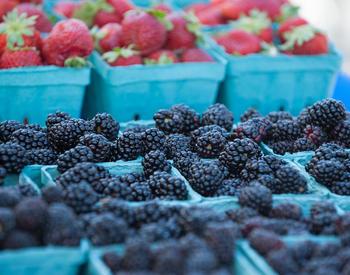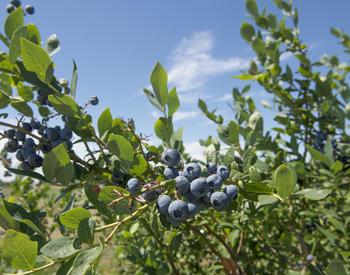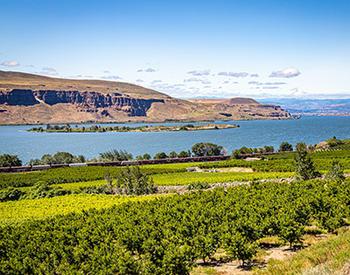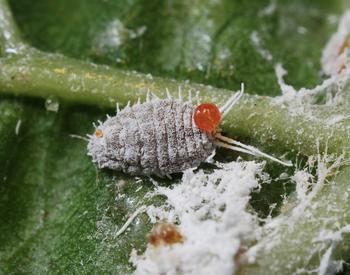Raspberries
Pruning methods for raspberries vary, depending on the type of raspberries you plan. See Growing Raspberries in Your Home Garden for more information.
Summer-bearing red raspberries
Summer-bearing red raspberries are biennial in habit, growing one year and producing fruit the next.
During the dormant season
From October through early March, remove all weak, broken, diseased and insect-damaged canes. Thin remaining primocanes (new cane growth) to 10–12 canes per hill or four to five per foot of hedgerow, and shorten the canes to 5 1⁄2 feet to encourage branching.
Spring/summer
Remove all canes that grow between the hills or in the row aisles by pruning or cultivating. After you have harvested the last of the fruit, remove all old floricanes on which fruit was borne.
Fall-bearing raspberries
You can grow these plants for both an early summer and a fall crop. Primocanes (new cane growth) bear fruit in the fall at the tips of the cane and produce a second crop the following spring from lateral branches.
During the dormant season
Remove the weak or damaged canes and the two-year (spent) floricanes that bore the summer fruit. Remove the portion of canes that fruited last fall (the tips). Thin canes as for summer-bearing raspberry.
You can grow fall-bearing raspberry for a fall crop only. For this method, cut all canes to ground level when plants are dormant. When the new primocanes emerge, maintain a row width of 12–15 inches by removing excess suckers by pruning or cultivation.
Black and purple raspberries
Black raspberry plants have arched canes rather than the more upright canes of red raspberry. New canes are not produced from roots; they develop only from the base of old canes. Purple raspberries are hybrids of red and black raspberries.
Late spring/summer
Black and purple raspberries need to be cut back during the growing season to encourage branching. Remove the top 3-4 inches of primocanes (new shoots). Do this early in the season so that you are topping blackcaps to a height of 2 feet and purples to 21⁄2 feet to encourage them to produce lateral branches. You usually have to go over the planting several times during the summer. After harvest remove all floricanes (2-year old canes which have born fruit).
During the dormant season
Remove all damaged canes and those less than 1⁄2-inch in diameter. Most plants have at least five canes larger than 1⁄2 inch. However, if all canes are smaller than 1⁄2 inch, remove all but the two or three largest ones. Lateral branches also should be shortened during the dormant period. Shorten laterals to 1–1 1⁄2 feet in length. Cut unbranched canes to 2 1⁄2 to 3 feet.
Blueberries
Prune blueberry bushes to ensure healthy crops. See Growing Blueberries in Your Home Garden for more information.
At planting
Prune all branches back by about 30%–40% to encourage vigorous new growth. Young plants require little pruning for the first two to three years. Remove dead or dying parts of branches and less vigorous, spindly growth around the base of plants to encourage vigorous upright growth.
Another approach
It is important that blueberries get established before allowing them to bear fruit, according to Fall Creek Farm and Nursery. Heavily prune them in following years to avoid overfruiting, which results in small fruit or poor growth.
Remove all blooms as they appear the first year. In following years, follow these steps after the leaves have dropped:
- Remove low growth around the base. If it doesn’t grow up, it gets pruned out!
- Remove the dead wood and nonvigorous twiggy wood. Select for bright reddish colored wood with long (at least 3-inch) laterals. Remove blotchy-colored short growth.
- If 1⁄3 to 1⁄2 of the wood has not been removed by the above steps, thin out the fruiting laterals and small branches until you achieve this balance.
Currants and gooseberries
These bear on 1- and 2-year-old wood. Four-year-old and older wood produces poor berries and should be removed. Clean up bushes by removing the oldest shoots in winter, thinning out the new growth, and cutting out dead wood. If berries are very small one year, thin the following winter.

















